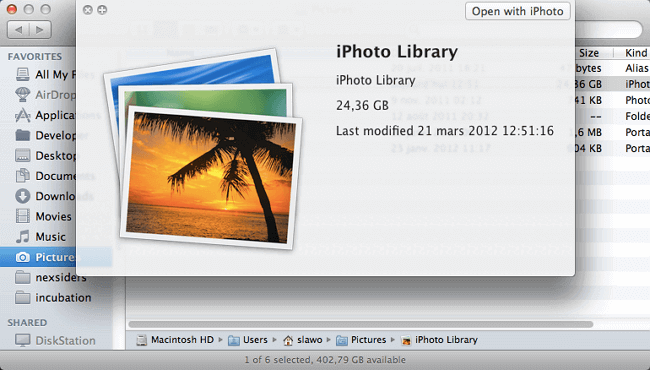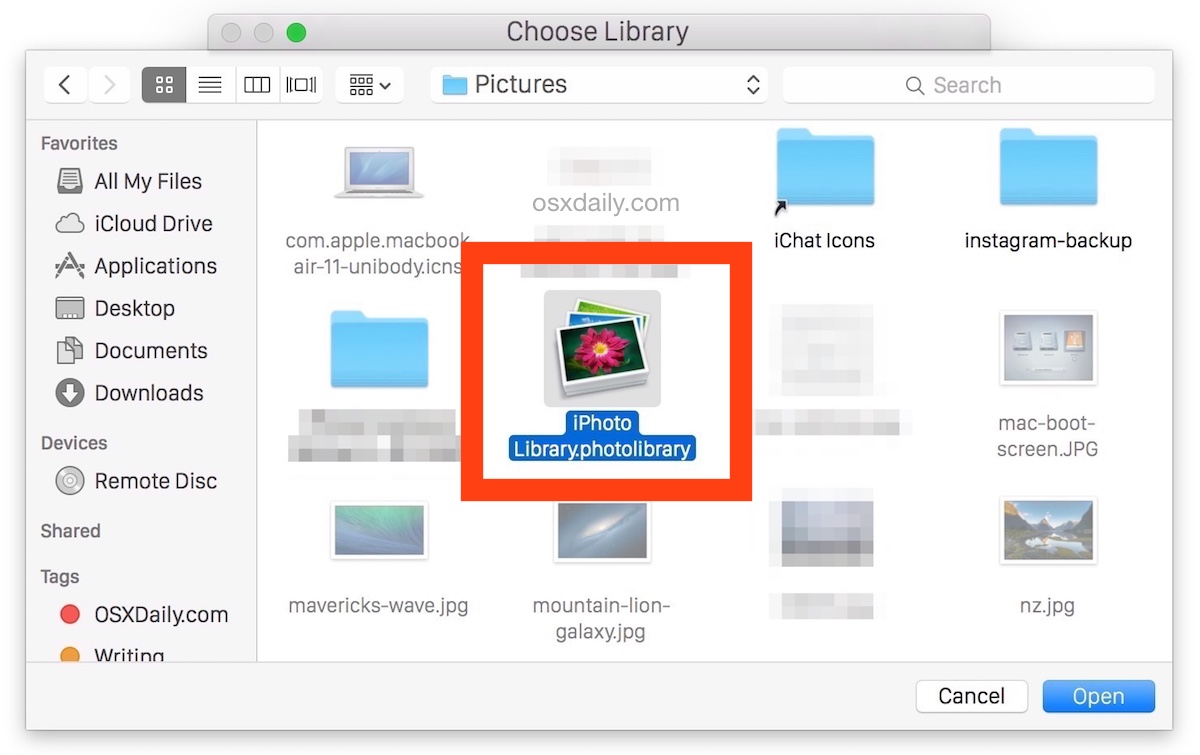Import Old Iphoto Library On Mac
Having numerous libraries on an iPhoto application is quite normal. Creating libraries might organize your photos but, having more than suggested libraries can be confusing. Additionally, it can also be annoying to manually select an iPhoto library every time you open a Photos app on your Mac. This is why many users are searching for ways to merge the iPhoto libraries.
Another scenario where a user wants to export the photos from the old Aperture library to the latest Photos application. Regardless of the requirement or the scenario, the process of merging the iPhoto library is going to stay the same. Please refer to the content below to know the Apple suggested methods to merge iPhoto libraries.

Disclaimer: While merging the iPhoto libraries there is a possibility of losing photos. So, be very cautious while merging.
Note - In case if your iPhoto library is crashing while following the procedure mentioned below, learn how to repair iPhoto crashing
How to Combine iPhoto Libraries?
- DO NOT IMPORT A LIBRARY INTO ANOTHER LIBRARY! Copy the old library into the Pictures folder on your new iMac. If you have a new library there then move it to the Trash bin beforehand. Then launch iPhoto and it will open the old library and convert it to the newer version if necessary. There is no importing necssary.
- By default, iPhoto is a photo management program which comes standard on every Mac computer. But if you want change your Mac computer to Windows PC, then you need to transfer you all data from Mac to Windows PC. The most important thing is your photos and videos. You can transfer all your photos from iPhoto to Windows with simple steps.
There are a couple of methods to combine the iPhoto libraries.

- Merge iPhoto libraries by importing and exporting the photos
- Merging the iPhoto libraries using Open Package Content
How to Merge iPhoto Libraries Using Export and Import Method?
If you have updated your Mac to OS X 10.10.3, you’d like to migrate all your photos from iPhoto Library to Photo Library. Here is the quickest way you can do so. Let’s take a look! Note: Before going further, make sure to delete duplicate files and update any Metadata if you want in your iPhoto Library. Once you have pruned your iPhoto. Mac users coming from iPhoto may wish to move an iPhoto Library to the new Photos app. While importing is an option when first setting up the Photos app in OS X, many users many have skipped the initial setup screens and missed that opportunity to import pictures and images into Photos from apps like Aperture and iPhoto.
If you have referred to Apple’s support page for the Exporting and Importing the photos, it is a little intimidating and confusing. So, here is a detailed explanation of every single step to merge two different iPhoto libraries.
Before starting the iPhoto merging process, be a little cautious, because there are numerous steps, you might get confused and accidentally delete one or two photos. If you have deleted you can recover the deleted photos on Mac.
Choose iPhoto Library
The first step of combining the iPhoto library is to select the library you want to merge. To keep things simple, let’s consider the libraries you want to merge to be Old Library and New Library. We want to merge Old Library to New Library.
Firstly you have to select the Old Library. To open the Old Library, hold the options key while opening the Photos application. Which will open the Choose Library dialogue box. Now select the Old Library (the library you want to merge with) and click on choose library option.
Once the library is selected, open the Photos application. The next stage is to export photos, which are mentioned below.
Export the Photos from Old Library
The next step in merging iPhoto libraries is to export the photos from the Old library to a separate folder. To do so, open the photos application with Old library selected.
Note: You cannot directly export photos from the old library to the new library. First, you have to export photos from the old library to a separate folder. Later import the photos from the folder to the new library.
Select the desired photos from Old Library to merge with New Library and go to the File menu, a select Export option where you will see two more options

- Export Photo: If you have edited the photos or made any changes to the photos you can select this option
- Export Unmodified Original for Photos: Selecting this option will discard any changes you have made such as special title or edits you have done to a photo. Also selecting this option will give you a special dialogue box with numerous options that let you change the format of the exported photos. All these options are self-explanatory.
Click on Export. Since Apple did not provide feasibility to directly export photos from one library to another, first you have to export the photos to a folder. Later you can import photos from that folder to a New Library.
So, after clicking on the export option create a folder on the desired location with the recognizable folder name, and for one last time click on the Export option.
Note: It is suggested to create a folder on the desktop so that it is easy to find. If you lost any photos while exporting photos, you can use Remo Photo recovery software.
Importing the Photos to New Library
The final step is to import the photos to New library. To do that you have to select the New Library. Similarly, hold the options button while opening the Photos application and choose the New Library.
Once the New Library is selected, go to File in the menu bar and select the Import option. Which will open the import dialogue box, from the import dialogue box go to Desktop or the location where you have created a folder with exported photos. Select the folder with exported photos and click on Import to successfully merge Old iPhoto Library with New Library.
Note: Suppose you want to share photos from your iPhone to the non-apple devices, then read this article to learn to Share iCloud photos with non-apple devices easily.
Import Old Iphoto Library On Mac Os
Merge iPhoto Library using Open Package Content Method
Before going through this method, there is a small concept you have to clear. iPhoto library is a package of various different folders. A typical iPhoto library package consists of the following folders
- DataBase
- External
- Originals
- Private
- Resource
Import Old Iphoto Library On Mac Pro
This is how Apple organizes photos in the iPhoto library. To merge different iPhoto Libraries, you don’t need detailed information about those folders so we shall just skip that part. Now moving on to merging two iPhoto libraries here is how to combine iPhoto libraries
- Open Finder and from left sidebar select Pictures tab
- Generally, the pictures tab will contain all the libraries available on your Mac
- As discussed earlier, consider the same New and Old iPhoto Library concept
- Right-click on the old Library and from the displayed options select “Open Package Content”
- This will reveal above aforementioned folders.
- Now go back to the pictures tab and Open the New iPhoto Library. Just double click on the New Library to open it
- All you have to do to merge the Old and New Library is to just drag and drop the Originals folder from the Old Photos library into the currently opened New Library.
- This will import the photos from Old library to New iPhoto Library.
Can I merge two photo libraries on Mac using iCloud?
Import Old Iphoto Library Mac
Yes, you can merge two Photo Libraries using iCloud yet, it is not suggested. Because firstly it is not merging, it is just uploading photos from two different iPhoto libraries onto the iCloud. Secondly, considering the cost of iCloud space, it is not practical to subscribe to iCloud just to merge iPhoto libraries.
Import Old Iphoto Library To New Mac
Obviously, it has its own perks. For example, there is no fear of data loss, even though you might delete a photo you can recover that deleted photo from iCloud.